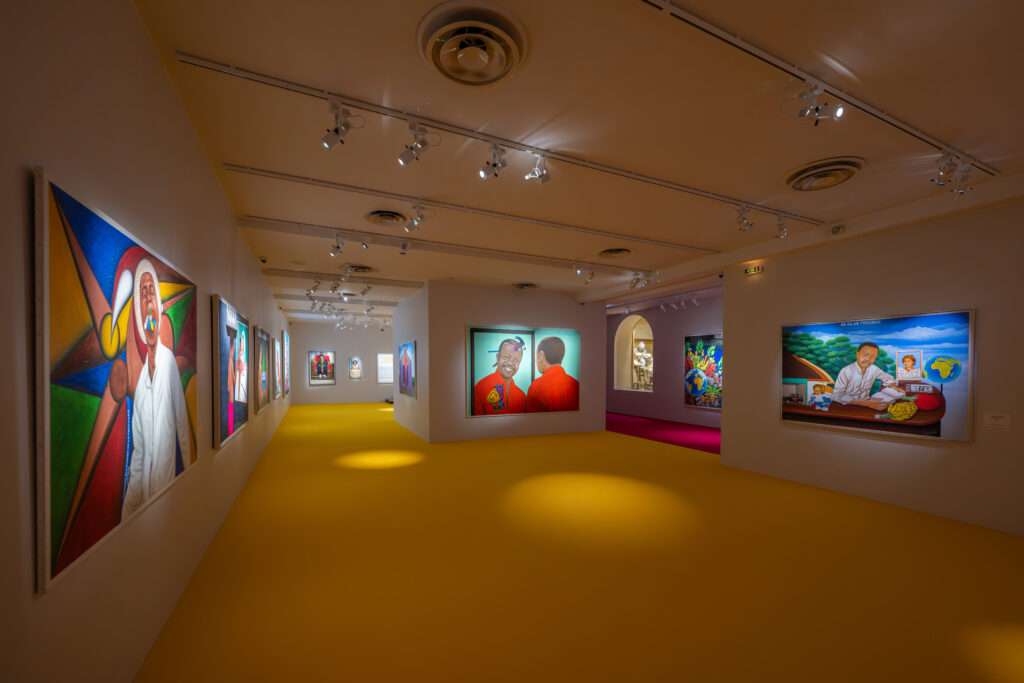The elegant museum of the artist Aristide Maillol (1861-1944), created by his former model Dina Vierny and housed in the Bouchardon town house in Paris’s 7th arrondissement, has already hosted dozens of temporary exhibitions alongside its permanent collections. Since 1995, more than sixty modern and contemporary artists of French and foreign renown – Toulouse-Lautrec, Gustav Klimt, Magritte, Picasso, Miro and Jean-Michel Basquiat, to name but a few – have been exhibited in this opulent building in one of the French capital’s bourgeois downtown districts.
But for the first time, it is time for Africa and an explosion of colours! So, it is now the turn of one of the greatest icons of contemporary African art to be honoured, Chéri Samba, who, with his vibrant palette paintings, stands out from the classic works of the master of the house. Running from October 17th 2023 to April 7th 2024, the current exhibition presents a journey divided into five major themes relating to the work of the Congolese artist: Self-portrait as a use of the world, The multiple woman, Kinshasa, the Congo and Africa, Geopolitics, and Art history revisited and corrected. The exhibition features more than fifty large-format, highly contrasting paintings dating from the 1970s to the present day, and presented in a very pop style by curators Jérôme Neutres and Elisabeth Whitelaw.
The exhibition was also possible due to André Magnin, the artistic director of the Jean Pigozzi collection, and to the very same Jean Pigozzi, a businessman and patron of the arts, for his collection of works by over 140 artists from 22 African countries – one of the most important in the world – which, for over thirty years, has made a major contribution to the recognition of artists from sub-Saharan Africa, who have been very much in vogue on the international scene in recent years, both in museums and at art fairs.
Born in 1956 in Pinto in the Congo, Chéri Samba was passionate about drawing and self-taught. He left school at sixteen to move to Kinshasa, the city of all possibilities, where he became a poster artist in sign-painting workshops, while also publishing comic strips that have already earned him a certain reputation. Kinshasa, the bustling capital of the Congo, a sprawling metropolis and the world’s largest French-speaking city, became the adopted home of Chéri Samba, who has lived and worked there for 50 years. In 1975, he opened his own studio where he exhibited his paintings on the outside walls to raise his profile. Although he initially produced commissioned works, Chéri Samba soon established his style with ultra-colourful figurative, narrative and then denunciatory paintings, in which he almost always depicts himself and incorporates texts in Lingala, Kikongo and French, the better to get his messages across and hold the viewer’s attention. He called this process the “Sambaïan signature” and his paintings “bubble paintings”, an expression borrowed from the world of comics. Although he initially signed his paintings “Dessinateur Samba”, he became “Chéri Samba” from 1979 onwards and asserted his artistic strategy of “starification”, wanting to become a painter loved by all.
“For lack of having been a television star, I’d like people to recognise me, which is why I often put myself on stage. And if I use a lot of text in my paintings, it’s so that people can get even closer to reading them,” he explains with his mischievous smile. An artist who is both global and deeply rooted in his Kinshasa culture, he has become one of the greatest ambassadors of Congolese “popular painting”, the urban art that emerged in his country in the 1970s. He then made his first appearance in Europe in 1989 with the cult exhibition “Magiciens de la Terre“, jointly presenting over one hundred living non-Western artists from five continents at the Centre Georges-Pompidou and the Grande Halle de La Villette. Since then, his work has been exhibited all over the world, and acquired by numerous private and public collections. Chéri Samba is justifiably proud of his international reputation, which contradicts old prejudices about ghettoised African art, and he likes to declare: “I’ve become universal!”
Beyond the apparent festive tone of his canvases, the most famous Congolese artist is not content with depicting the buzzing atmosphere of Kinshasa’s nights; instead, he relates the world’s failings and turbulence, tackling issues as vast and varied as colonisation, AIDS, Ebola, child soldiers, the return of works of art to Africa, the place of religion in Africa, international arms trafficking, employer-employee relations, the slave trade, climate change, the massive destruction wrought by the invasion of Iraq, the 11 September attacks, but also women in all their forms – mothers, wives, mistresses, businesswomen, prostitutes – which have punctuated his life and work. A chronicler of everyday life, customs and social, moral and political conflicts, Chéri Samba feeds off current events, challenging them, denouncing them, caricaturing them and provoking them with his highly personal sense of humour. “In my paintings, I like to challenge people’s consciences by mixing words and colours with the news I’m exploiting. I invite my viewers to reflect on the paradoxes that exist between Europe and Africa, because I like to think that the artist can change mentalities,” he explains.
Two of his most emblematic works are on show: J’aime la couleur, his most famous work, which depicts his face in the shape of a spiral against a background of blue sky, a paintbrush between his teeth, like a peaceful weapon of mass promotion, and which, as is often the case, has a double meaning: a tribute to painting, which gives meaning to life, and an affirmation of the man of colour, amusing himself by calling white people “colourless”… Or in the triptych Quel avenir pour notre art ? the artist appears on a par with Picasso, whom he depicts as a black man.
A portraitist, caricaturist and painter-journalist with a strong character, a sharp eye for our world and a rich imagination full of symbols, this “performer-sapper” at heart, who has spent half a century creating, is proud to have had his Congolese name entered in the dictionary a few years ago.
While the representation of nudity was a taboo subject in African art from the 1970s to the 1980s, Chéri Samba is unashamed about the number of his female conquests, which continue to inspire him to better disseminate his art and pass on his messages. While the study of the female nude forms the basis of Aristide Maillol’s sculptures, all round and pure, they exude a very strong sensuality and personality, forming original correspondences with the female characters in Samba’s paintings. The coming together of these two artists is a powerful symbol of the finally confirmed recognition of contemporary African art in Western museums. In short, it is the meeting of the black man and the white man, both great lovers of women and each in their own way, Samba and Maillol.
Text by Christine Cibert



